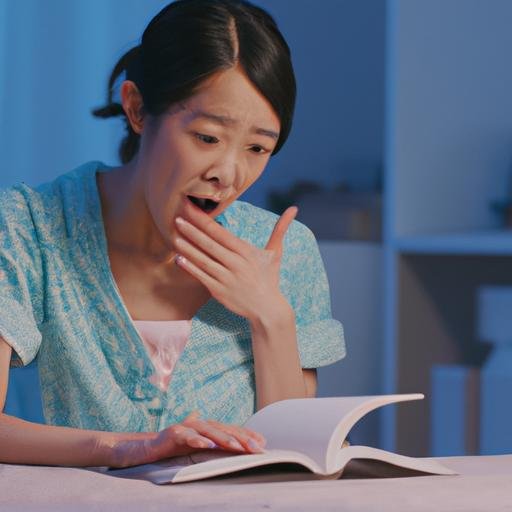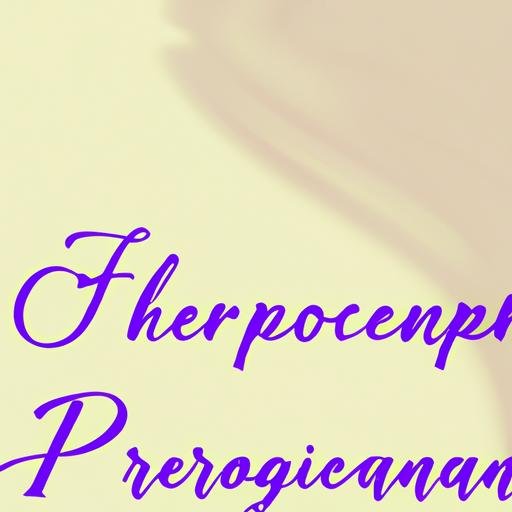In a world where the lines between page and screen blur more than ever before, the art of adapting classic literature for modern audiences is a delicate dance between honoring the timeless stories of the past and captivating the attention of today’s viewers. From beloved novels to iconic plays, the challenge of breathing new life into age-old tales is a daunting task that requires a balance of respect for the source material and innovation in storytelling. Join us as we explore five examples of how classic literature has been reimagined for the screen, captivating audiences in new and unexpected ways.
The Art of Adaptation: Bringing Classic Literature to Life
In the ever-evolving world of entertainment, the art of adaptation is a key component in bringing classic literature to life for modern audiences. From beloved novels to iconic plays, the process of translating these timeless stories from page to screen requires careful consideration and a deep understanding of the source material.
Adapting classic literature for modern audiences involves a delicate balance of honoring the original work while also making it accessible and engaging for contemporary viewers. By updating settings, dialogue, and themes, filmmakers and screenwriters can breathe new life into old stories, introducing them to a whole new generation. **Through innovative storytelling techniques and visual effects, adaptations can transport audiences to different worlds and eras, creating a truly immersive viewing experience.**
Understanding the Challenges of Adapting Old Works for Today’s Audience
Adapting classic literature for modern audiences poses a unique set of challenges that require careful consideration and creativity. One of the main hurdles is striking a balance between staying true to the original text’s themes and characters while also making it relevant and engaging for today’s viewers. Additionally, updating language and cultural references to resonate with contemporary audiences without losing the essence of the story is a delicate task.
Another challenge that filmmakers and producers face is the potential backlash from purists who may be resistant to changes made to beloved works of literature. Balancing the expectations of die-hard fans with the need for innovation and fresh perspectives can be a tightrope walk for those tasked with adapting old works for today’s audience. Ultimately, successful adaptations require a deep understanding of the source material, a keen insight into current trends, and a willingness to take creative risks to breathe new life into timeless classics.

Choosing the Right Classic Literature for Adaptation
Adapting classic literature for modern audiences can be a challenging yet rewarding endeavor. When selecting which classic works to adapt, it is crucial to consider several factors to ensure a successful transition from page to screen. Here are some key considerations you should keep in mind:
- Relevance: Choose a classic work that has themes or messages that are still pertinent to today’s society. This will help resonate with modern audiences and keep them engaged throughout the adaptation.
- Adaptability: Look for classic literature that has a strong plot and well-developed characters that can be easily translated into a visual medium. Stories with complex narratives or abstract concepts may be more challenging to adapt effectively.
- Timelessness: Select works that have stood the test of time and continue to be beloved by readers. By choosing a classic that has enduring popularity, you increase the likelihood of attracting a large audience to your adaptation.
| Classic Work | Reason for Adaptation |
|---|---|
| Great Expectations by Charles Dickens | Exploration of class and social mobility |
| Jane Eyre by Charlotte Bronte | Themes of independence and feminism |
| Pride and Prejudice by Jane Austen | Timeless romance and social commentary |

Balancing Fidelity to the Source Material with Creativity in Adaptation
When adapting classic literature for modern audiences, striking a balance between fidelity to the source material and creativity is key. It is essential to respect the original work while also finding innovative ways to breathe new life into the story. One approach is to carefully analyze the themes and characters of the original text, and use them as a foundation for the adaptation.
Utilizing modern storytelling techniques and technology can enhance the adaptation process. Incorporating visual effects, sound design, and interactive elements can help captivate audiences and immerse them in the world of the classic literary work. However, it is important to remember that staying true to the essence of the source material is crucial in order to maintain the integrity of the story and resonate with both fans of the original work and new audiences.

Modernizing Language and Themes for Contemporary Viewers
In the fast-paced world of entertainment, adapting classic literature for modern audiences presents a unique challenge. One key aspect of this adaptation process is modernizing language and themes to resonate with contemporary viewers. By updating the dialogue and themes of a beloved literary work, filmmakers and showrunners can bridge the gap between the past and the present, making these timeless stories accessible to a new generation of viewers.
When adapting classic literature for the screen, it is crucial to strike a balance between honoring the original text and catering to the tastes of today’s audience. This delicate dance often involves reinterpreting themes and characters to reflect current social issues and sensibilities. By breathing new life into old stories through modern language and themes, filmmakers can ensure that these timeless tales continue to captivate and inspire audiences for years to come.

The Importance of Casting in Adapting Classic Literature
When adapting classic literature for modern audiences, one of the key aspects to consider is the casting of the characters. The right actors can bring a new level of depth and meaning to the story, helping to engage viewers and provide a fresh perspective on familiar tales. Casting decisions can make or break an adaptation, as the actors must embody the essence of the characters while also bringing something new and relevant to the table.
Through careful casting, filmmakers can breathe new life into beloved stories, making them resonate with contemporary audiences. Whether it’s casting well-known actors to attract a wider audience or discovering hidden gems to bring a fresh perspective, the importance of casting cannot be understated. A talented cast can transform a classic novel into a cinematic masterpiece, creating a bridge between the past and the present for viewers to enjoy and appreciate.
Staying True to the Spirit of the Original Work in Adaptation
When adapting classic literature for modern audiences, it is essential to stay true to the spirit of the original work. This means capturing the essence of the story, characters, and themes that made the book a timeless classic in the first place. While some changes and updates may be necessary to appeal to contemporary viewers, it is crucial to preserve the heart and soul of the original text.
One way to ensure that the adaptation maintains the integrity of the original work is by closely examining the source material and understanding what made it resonate with readers in the first place. By identifying key themes, character arcs, and plot points, filmmakers can create a faithful adaptation that honors the legacy of the classic literature. Additionally, consulting with literary experts and scholars can provide valuable insight into the author’s intentions and help guide the adaptation process.
Utilizing Visual and Cinematic Techniques to Enhance Adaptations
When adapting classic literature for modern audiences, it is essential to utilize visual and cinematic techniques effectively in order to enhance the storytelling experience. One approach is through the use of dynamic cinematography to bring the characters and settings to life in a way that resonates with contemporary viewers. By incorporating creative camera angles and innovative lighting techniques, filmmakers can capture the essence of the original text while also making it visually engaging for today’s audience.
Another key aspect of enhancing adaptations is through the use of visual effects to create a sense of immersion and fantasy within the narrative. Whether it’s bringing mythical creatures to life or recreating historical settings with digital enhancement, visual effects can transport viewers into the world of the story in a way that words alone cannot. By combining these visual and cinematic techniques with faithful storytelling, filmmakers can create adaptations that are both visually stunning and emotionally resonant for modern audiences.

Navigating Cultural Sensitivities When Adapting Classic Literature
When adapting classic literature for modern audiences, it is crucial to navigate cultural sensitivities with care and thoughtfulness. As we bring beloved stories from the page to the screen, we must consider how to honor the original work while also addressing potentially sensitive themes in a respectful manner. Here are some important considerations to keep in mind:
- Research and Consultation: Before making any changes to the original text, it is essential to conduct thorough research on the cultural context in which the classic literature was written. Consulting with experts or cultural advisors can provide valuable insights on how to approach sensitive topics.
- Representation and Diversity: When adapting classic literature, it is important to ensure that diverse perspectives and experiences are accurately portrayed on screen. This may involve making changes to the characters, settings, or dialogue to reflect the cultural diversity of modern audiences.
Marketing and Promoting Adaptations of Classic Literature
Adapting classic literature for modern audiences is a delicate yet rewarding task that requires a deep understanding of both the source material and the target demographic. One key aspect of successfully marketing and promoting these adaptations is to highlight the timeless themes and universal truths that resonate with audiences of all ages. By emphasizing the relevance of classic stories to contemporary society, filmmakers and marketers can attract a wider audience and generate buzz around their projects.
Another important strategy for promoting adaptations of classic literature is to leverage the star power of well-known actors and directors. Casting beloved performers in iconic roles can generate excitement and draw in fans of both the original source material and the entertainment industry. Additionally, collaborating with reputable filmmakers who have a track record of successfully adapting classic texts can lend credibility to the project and reassure audiences that their favorite stories are in good hands.

The Future of Adapting Classic Literature for Modern Audiences
Adapting classic literature for modern audiences has become a popular trend in the entertainment industry, with many works from the past being reimagined for today’s viewers. From timeless novels to iconic plays, these adaptations aim to capture the essence of the original while appealing to a contemporary audience. One key aspect of bringing these classics to life is the transition from the written page to the silver screen, as filmmakers and producers carefully craft visual interpretations that resonate with modern sensibilities.
When adapting classic literature, filmmakers often face the challenge of balancing fidelity to the source material with the need to make the story accessible to today’s audiences. **Character development** and **plot twists** play a crucial role in keeping the viewers engaged, while **visual effects** and **cinematography** help bring the world of the story to vivid life. By striking the right balance between honoring the original work and adapting it for modern tastes, these adaptations have the potential to introduce a new generation to timeless stories that have captivated readers for centuries.
Concluding Remarks
In conclusion, the transition from page to screen offers a fascinating insight into the evolution of classic literature for modern audiences. Whether it is through innovative adaptations or faithful retellings, these timeless stories continue to captivate and resonate with viewers around the world. As technology advances and storytelling techniques evolve, we can only look forward to the future adaptations that will bring these beloved works to life in new and exciting ways. So, next time you pick up a classic novel, remember the endless possibilities that await when it comes to adapting it for the screen.